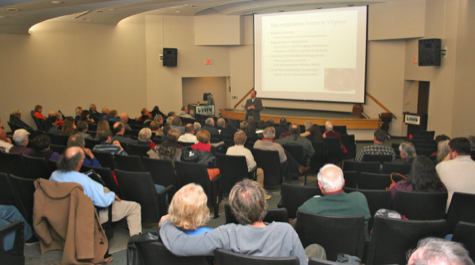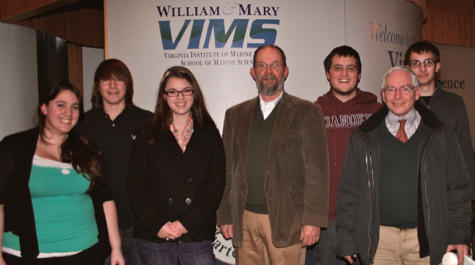VIMS honors Hershner with teaching marsh designation
CCRM director steps down just months shy of 50th year on campus
When Carl Hershner first stepped foot on the campus of the Virginia Institute of Marine Science, sea level was 8 inches lower and the Chesapeake Bay watershed held 7 million fewer people. Hewlett Packard had just released the first pocket calculator, and Intel the first microprocessor.
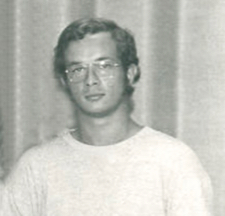 The year was 1971, and Hershner was a new graduate student in the School of Marine Science at VIMS, with no “clear idea what I wanted to be when I grew up,” he says. Fortunately for the Chesapeake region, his subsequent career choices and accomplishments have had a marked positive impact on the health of the entire Bay ecosystem—from upland forests to freshwater swamps and saltwater marshes.
The year was 1971, and Hershner was a new graduate student in the School of Marine Science at VIMS, with no “clear idea what I wanted to be when I grew up,” he says. Fortunately for the Chesapeake region, his subsequent career choices and accomplishments have had a marked positive impact on the health of the entire Bay ecosystem—from upland forests to freshwater swamps and saltwater marshes.
Hershner, who retired earlier this year as founding Director of VIMS’ Center for Coastal Resources Management, or CCRM, “is one of a handful of Bay leaders whose work was absolutely instrumental in helping to turn the tide toward a healthier Bay.” That’s from Dr. John Wells, VIMS Dean and Director, who has seen the evidence of Hershner’s accomplishments first-hand during his own tenure along the Chesapeake shoreline and in the legislative chambers of Richmond, Annapolis, and Washington, D.C.
Teaching Marsh
One testament to Hershner’s many achievements is the recent naming of VIMS’ Teaching Marsh in his honor. Excavated and planted by Hershner and colleagues in 1999, it now provides year-round opportunities to learn about native wetland habitats and coastal resilience. Gifts to the Carl Hershner Teaching Marsh Fund will help support this public outdoor classroom into the future.
Dr. Kirk Havens, new CCRM director, says “The Hershner Teaching Marsh is a tangible representation of Carl’s outsize impact on the health and sustainability of our coast. He built CCRM into a source of independent, objective science that has become a trusted resource for state agencies, local governments, the legislature, and the public. His leadership has literally helped write the legislation that protects Virginia’s coastline and watershed resources.”
Hershner’s legacy also lives on through his many students; a wealth of online mapping and decision-making tools; and in the laws of Virginia, with a legislated preference for living shorelines just one example. 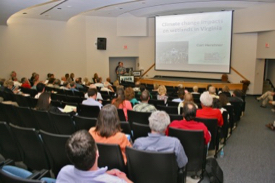 Further evidence of his impacts includes his decades of service on a multitude of advisory committees at the federal, regional, state, and local level (in addition to membership on 48 committees internal to VIMS and William & Mary). His total of 69 external service roles includes multi-year memberships, often as Chair, on the Virginia Chesapeake Bay TMDL Advisory Panel, Governor’s Wetlands Initiative Task Force, Chesapeake Bay Program’s Scientific and Technical Advisory Committee, Maryland Chesapeake Bay Restoration Program Advisory Board, Mid-Atlantic Wetlands Workgroup, EPA Coastal Elevations and Sea Level Rise Advisory Committee, and National Climate Assessment Technical Inputs Team.
Further evidence of his impacts includes his decades of service on a multitude of advisory committees at the federal, regional, state, and local level (in addition to membership on 48 committees internal to VIMS and William & Mary). His total of 69 external service roles includes multi-year memberships, often as Chair, on the Virginia Chesapeake Bay TMDL Advisory Panel, Governor’s Wetlands Initiative Task Force, Chesapeake Bay Program’s Scientific and Technical Advisory Committee, Maryland Chesapeake Bay Restoration Program Advisory Board, Mid-Atlantic Wetlands Workgroup, EPA Coastal Elevations and Sea Level Rise Advisory Committee, and National Climate Assessment Technical Inputs Team.
On the academic front, Hershner is an author or co-author of more than 30 peer-reviewed research articles, the recipient of more than 200 public and private research grants, and the invited speaker during more than 190 scholarly presentations.
Law and Coders
Hershner’s career at VIMS progressed in concert with two major forces that have transformed the U.S. and world during the past 50 years—the environmental movement and the digital revolution. It also exemplifies VIMS’ mission of advisory service to the Commonwealth.
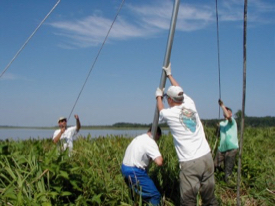 Hershner’s first full year of graduate school, 1972, was marked by the passage of two landmark pieces of environmental legislation—the federal Clean Water Act and the Virginia Tidal Wetlands Act. These laws helped shape his interest in studying Bay waters and wetlands, while his subsequent research helped refine their implementation and enhance their protections.
Hershner’s first full year of graduate school, 1972, was marked by the passage of two landmark pieces of environmental legislation—the federal Clean Water Act and the Virginia Tidal Wetlands Act. These laws helped shape his interest in studying Bay waters and wetlands, while his subsequent research helped refine their implementation and enhance their protections.
“When I came to VIMS,” says Hershner, “coastal wetlands were one area ripe for discovery and generation of new knowledge. 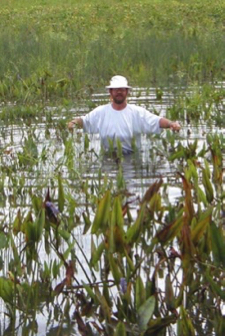 A few trips to the field to help Ken Moore, Don Axelrad, and Irv Mendelssohn wrest insights from the waist-deep muds of Virginia’s wetlands and I was hooked.”
A few trips to the field to help Ken Moore, Don Axelrad, and Irv Mendelssohn wrest insights from the waist-deep muds of Virginia’s wetlands and I was hooked.”
Spurred by a major oil spill off Santa Barbara, California in 1969 and repeated fires atop Ohio’s highly polluted Cuyahoga River, Hershner’s doctoral research focused on oil’s effects on saltmarsh communities. He says this research helped him “learn a tremendous amount about both the pollutant’s effects and the basic biology of wetlands.”
After earning his Ph.D. in 1977, Hershner continued studying saltmarsh pollutants at VIMS, including both oil and herbicides. This research included numerous opportunities to translate his findings for use by policy-makers and resource managers, an activity he continued to pursue throughout his career.
“The thrill of helping to directly shape public policy was combined with the agony of discovering credible science wasn’t a trump card in the policy and management game,” says Hershner. “These revelations, combined with some exquisite lessons on the value of being succinct, helped me determine the windmills I would tilt after for the balance of my career.”
In 1978, Hershner accepted a position to develop technical guidance for the management program set forth in Virginia’s Tidal Wetlands Act. This rapidly evolved to include a much broader palette of activities. “Virginia’s legislators entrusted management of tidal wetlands to local citizen boards,” says Hershner. “There are more than 30 of these, one in almost every coastal county and city in Virginia, and each has 5 to 7 volunteers whose only qualification is a willingness to serve. Promoting informed and consistent decision-making by these boards was endlessly challenging. But that mission is the realized nexus of science and management, and so I signed on for the duration.”
VIMS’ efforts to advise policymakers on coastal issues flourished during the 1980s, with an expansion from tidal wetlands to beaches and dunes. Hershner began to involve graduate students in this work, a partnership that went on to produce a total of 45 master’s and PhD recipients over the next 4 decades.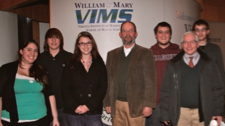
Colleagues in CCRM agree these students are one of Hershner’s greatest legacies. His former advisees include Matt Strickler, the current Secretary of Natural Resources for the Commonwealth of Virginia; Orelia Merchant, Chief Deputy Attorney General for State Counsel in New York; Dr. William Reay, director of the Chesapeake Bay National Estuarine Research Reserve; Dr. Jim Perry, VIMS emeritus professor and Past President of the Society of Wetland Scientists; and Pam Mason, a CCRM Senior Marine Scientist and elected director of the York County Soil and Water District. Four other former students are university professors, and several are principals in their own environmental consulting firms.
“Dr. Hershner's contributions to the Commonwealth of Virginia are too numerous to count: his fingerprints are on everything from our Chesapeake Bay cleanup plan to our new Coastal Resilience Master Planning Framework," says Strickler. "His teaching and approach to problem solving helped prepare me for my career at the confluence of environmental science, policy, and politics. Without Carl, I would absolutely not be capable of the work I do in my current job."
The Chesapeake Bay Preservation Act of 1988 and federal adoption of a policy of “no net loss” of wetlands in 1989 gave further impetus to VIMS’ advisory programs, which in 1992 coalesced under Hershner and colleague Dr. Suzette Kimball into a precursor to today’s CCRM. One program in particular, the Shoreline Inventory, began to tap the power of rapidly developing computer and internet technology. This program quickly evolved into a GIS-based effort that combined aerial photography, satellite data, and state-of-the-art surveying equipment to address coastal management issues.
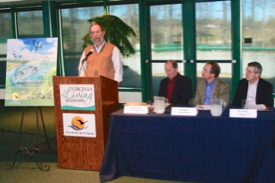 “When Suzette left VIMS,” says Hershner, “We rolled the Shoreline Inventory and Tidal Wetlands programs into today’s CCRM. This allowed us to begin developing a constantly evolving array of decision-support tools for resource managers. These are generally computer and web-based programs that synthesize a great deal of technical information and convey it in a user-friendly interface.” Online tools remain one of the primary areas of expertise and performance in CCRM today.
“When Suzette left VIMS,” says Hershner, “We rolled the Shoreline Inventory and Tidal Wetlands programs into today’s CCRM. This allowed us to begin developing a constantly evolving array of decision-support tools for resource managers. These are generally computer and web-based programs that synthesize a great deal of technical information and convey it in a user-friendly interface.” Online tools remain one of the primary areas of expertise and performance in CCRM today.
During the 1990s, the loss of non-tidal wetlands became an issue at both the national and state level. As the Commonwealth’s wetlands experts, Hershner and other CCRM scientists played a central advisory role when, in 2000, the General Assembly established a nontidal wetlands management program within Virginia’s Department of Environmental Quality. “Like the Tidal Wetlands Act, the Nontidal Wetlands Act identified VIMS as its principal scientific advisor,” says Hershner. 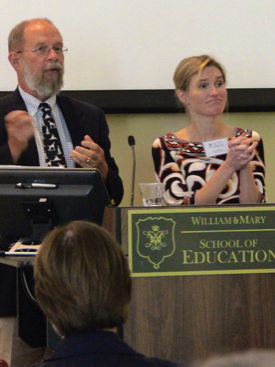 This advisory activity has since become one of CCRM’s major responsibilities, including development and upkeep of its Wetland Condition Assessment Tool. This interactive online tool allows users to assess water quality and habitat condition for each mapped nontidal wetland in Virginia—encompassing more than 1.2 million acres.
This advisory activity has since become one of CCRM’s major responsibilities, including development and upkeep of its Wetland Condition Assessment Tool. This interactive online tool allows users to assess water quality and habitat condition for each mapped nontidal wetland in Virginia—encompassing more than 1.2 million acres.
Hershner helped bring even more responsibilities into CCRM’s portfolio during the first two decades of the 2000s. “Our primary focus remains the ecology and management of tidal shorelines,” he says, “but new threats and challenges have involved us in everything from using side-scan sonar to locate and remove abandoned crab traps, recording marsh sounds to monitor populations of birds and amphibians, and modeling and tracking sea-level rise.”
Hershner notes that CCRM’s broad capabilities have led to work on projects throughout the mid-Atlantic. “Our expertise found us hired to develop a tidal shoreline inventory for Maryland, assess Delaware wetlands, and lead an effort in North Carolina to implement ecosystem-based management for the Albemarle-Pamlico National Estuary Program.” He says CCRM has also worked at the national and international levels, but “consciously limits those activities in order to remain responsive to our core advisory mission to the Commonwealth.”
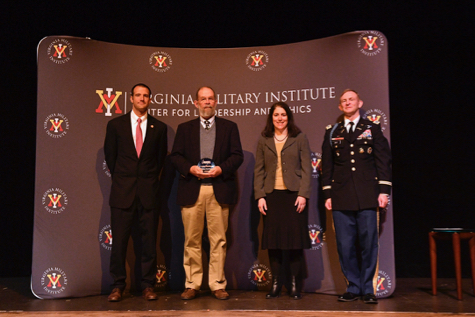 Pam Mason, a CCRM senior Scientist and Extension Manager, confirms Hershner’s enduring commitment to VIMS’ advisory service role. “Carl's favorite quote regarding his work in applied coastal science was ‘There is no greater service than that to the Commonwealth.’ He repeated it often, I believe both for himself and others, providing great inspiration and motivation in the complicated, sometimes frustrating, but always rewarding work of advisory service.”
Pam Mason, a CCRM senior Scientist and Extension Manager, confirms Hershner’s enduring commitment to VIMS’ advisory service role. “Carl's favorite quote regarding his work in applied coastal science was ‘There is no greater service than that to the Commonwealth.’ He repeated it often, I believe both for himself and others, providing great inspiration and motivation in the complicated, sometimes frustrating, but always rewarding work of advisory service.”


